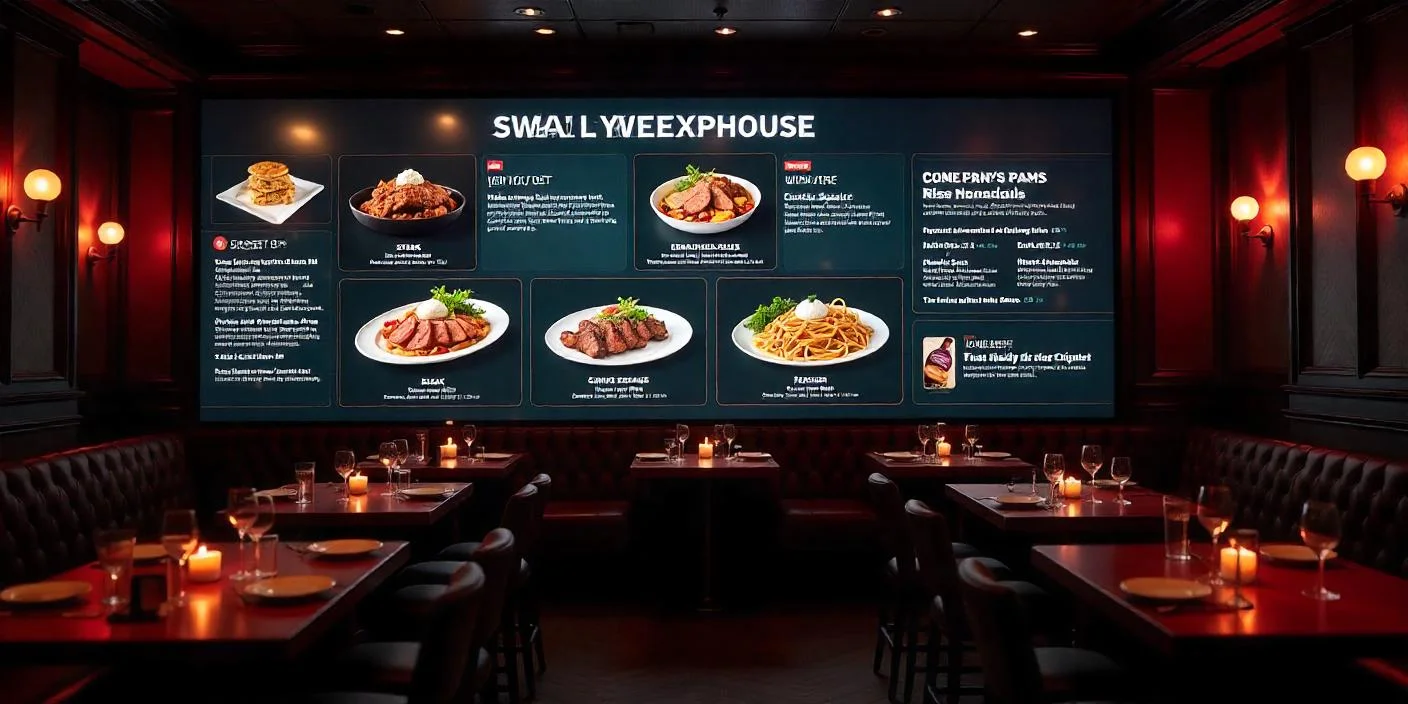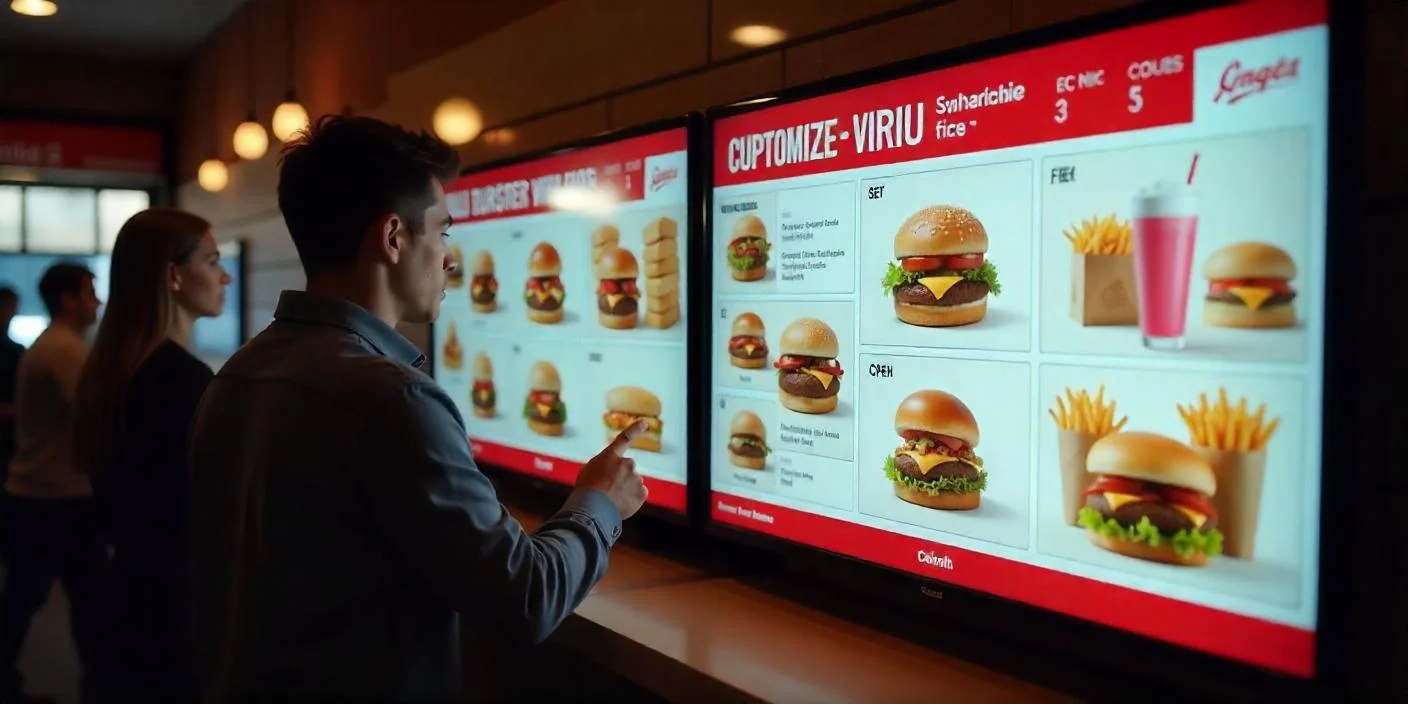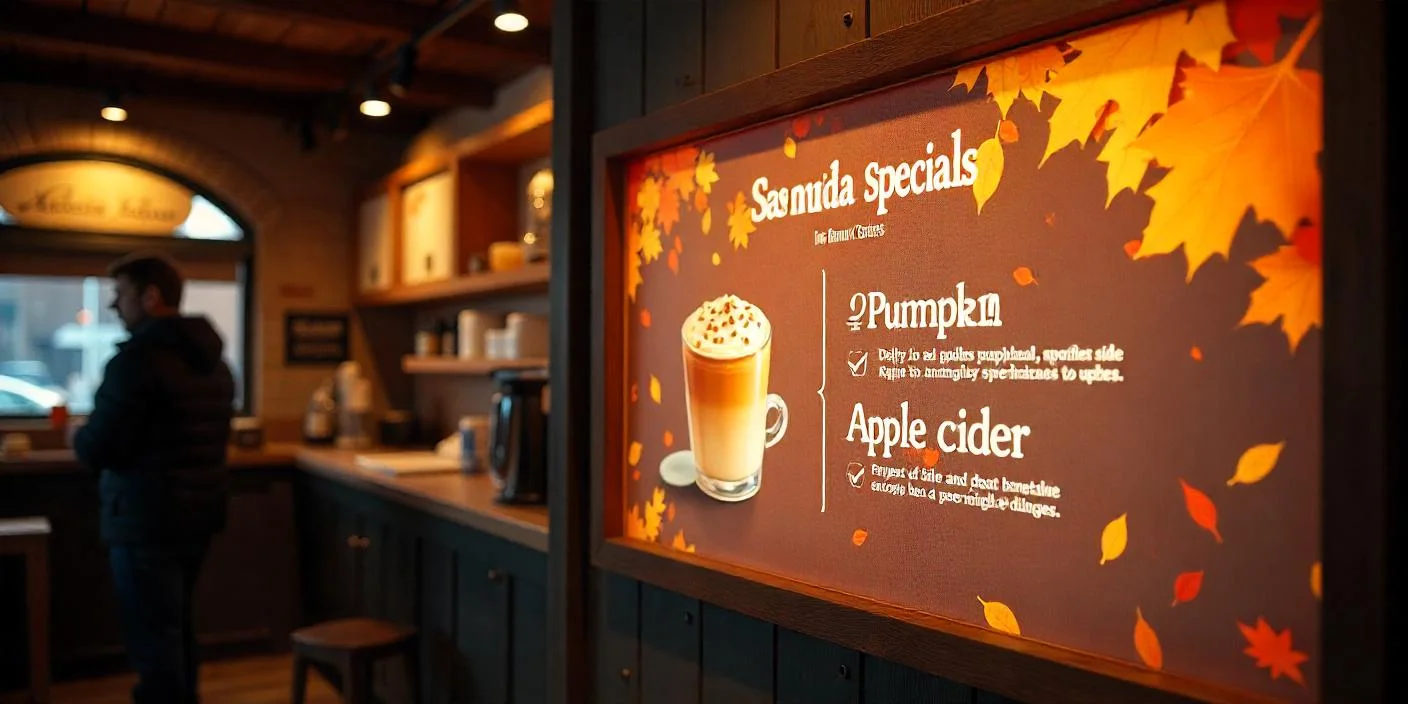Why Digital Menu Screens are Essential for Restaurants
Contemporary dining operations constantly search for modern methods to create superior customer experiences as they fight to remain ahead in their industry sector. Restaurants should implement digital menu screens as an effective solution. The combination of touch menu screens for restaurants and LCD screens for restaurant menus and food truck digital menu boards creates contemporary and versatile methods to display your menu and marketing content.
The guide provides complete information about restaurant digital menu screens through examination of benefits and types, installation guidance and best practices, and answers to common questions. Digital menus allow both small and large restaurant establishments to minimize operational expenses while enhancing brand quality.
What Makes Digital Menu Screens a Game Changer?
Dynamic and Easy-to-Update Content
Instant content updates are the main benefit that digital menu boards offer to users. Changes to prices along with new menu items or seasonal special promotions become possible instantaneously through digital menu screens because these platforms bypass the need for printed menu reprinting. Time and money savings, along with real-time updates, result in displaying the latest information to every customer.
Enhanced Visual Appeal
High-resolution LCD screens on restaurant menus display food items in a visually enhanced manner. Digital menus with bright video and image content of dishes draw more interest from customers while promoting their interaction with the menu. Digital menu templates that receive proper design treatment will generate higher sales through improved presentation of menu items.
Improved Customer Experience
Customers can use touch screen menus in restaurants to browse the menu options and customize their orders while making payments through the screen interface. The system both decreases waiting duration and increases order precision, which results in better dining satisfaction. Customers benefit from quick access to ingredient lists as well as nutritional facts and allergen warnings when they use the digital buttons on the system.
Cost-Effective in the Long Run
The expense of installing restaurant digital signage systems at first appears high but results in substantial financial advantages throughout its operational lifespan. Operating digital menu boards eliminates printing expenses and manual menu changes, which produces a more cost-effective solution in the long run.
Better Space Utilization
The compact dimensions of digital menu boards create an excellent fit for food trucks together with cafes by freeing up valuable space. Technology delivers a contemporary appearance that improves the entire dining space aesthetic.
Types of Digital Menu Screens for Restaurants
LCD/LED Menu Boards
The standard digital menu boards deliver excellent results in cafes together with fast-food chains and cafeterias. These boards show static or rotating menus, so they work well in areas that need fast understanding of the displayed content.
Touch Screen Menu Displays
Touch screen menus appear frequently in quick service restaurants (QSRs) and food courts as part of their operations. Customers benefit from touchscreen displays because they enable order customization while showing detailed menus and allowing payments on the screen.
Outdoor Digital Menu Boards
Drive-thru menus and outdoor ordering points make use of weatherproof outdoor digital display screens that ensure visibility under all sunlight conditions. Fast-food chains, together with food trucks, require these boards to operate effectively.
Hanging or Ceiling-Mounted Menu Screens
The screens serve restaurants that operate in large spaces with different dining sections exceptionally well. The installation of digital screens both on walls and ceilings enhances visibility because it lets guests see the menu from any spot in the restaurant.
Tabletop Digital Menu Screens
Restaurants offering premium dining establish tabletop digital screens or tablet devices that enable customers to access menus and place orders at their tables.
How to Set Up a Digital Menu Screen for Your Restaurant
Step 1: Choose the Right Hardware
Choose hardware that matches your restaurant requirements when making your selection. Standard menus work best on LCD/LED screens, yet touch screen menus function perfectly for interactive ordering systems. Restaurants operating food trucks must pick digital menu boards that are both compact and able to withstand different weather conditions.
Step 2: Select Digital Menu Board Software
Your restaurant should choose software that matches its dimensions and operational requirements. Features to look for include
- Easy editing restaurant menu JPG for flat screen
- Pre-designed digital menu templates
- The system allows remote changes through cloud-based operations.
- Integration with POS systems for seamless menu management
The most popular software solutions for digital menu boards are Nento, NoviSign, and Yodeck.
Step 3: Design Your Digital Menu
When designing your digital menu:
- High-resolution visual content, including images and videos, should be used to present the dishes.
- The text content needs to remain simple for viewers to read easily.
- Displaying bestsellers and promotional items will draw customers into making purchases.
- Your restaurant branding must determine the digital menu design parameters to maintain consistency.
Step 4: Install and Test
Install screens at a position that allows customers to view content easily. Test the touch features of the screens and check the Wi-Fi connection because it enables remote menu updates.
Step 5: Train Staff
Teach your staff members to maintain the menu system along with problem-solving and customer guidance for interactive screen operations.
Best Practices for Digital Menu Boards
- Keep It Simple: The screens should remain uncluttered to maintain simplicity. The screens should display text that is easy to read and contain attractive visuals.
- Use Animations Wisely: Subtle animations serve as effective attention-grabbers while staying non-distracting to customers.
- Update Regularly: Regular updates should be implemented by adding seasonal items and updating promotional sections of your menu.
- Optimize for Speed: The system should operate at optimal speed because slow content loading causes customer dissatisfaction.
• Ensure Visibility: Adjust screen brightness according to ambient lighting so customers can always read the content.
Take Your Restaurant to the Next Level with Digital Menus
The transition to digital menu screens represents a strategic business step that produces better customer satisfaction while decreasing operational expenses while maintaining a competitive market position. Nento provides all the necessary digital solutions, including interactive screens and menu boards and LCD displays, which allow you to build an exciting restaurant environment. Your restaurant presentation is ready to reach its highest potential. Perform a review of current digital signage solutions made for restaurants to unlock innovative customer engagement possibilities.
FAQs About Digital Menu Screens for Restaurants
How much does a digital menu board cost?
The price ranges from small to high based on the dimensions of the display screen and included features. Restaurant menu LCD screens start at $200 and reach $500 in price, yet interactive touchscreen menus cost between $800 and $3,000.
Can I edit my restaurant menu JPG for a flat screen?
The majority of digital menu board software enables users to both upload and modify JPG/PNG file formats. Users can perform simple menu adjustments through drag-and-drop tools that these systems provide.
What’s the best digital menu board software?
Nento, alongside NoviSign and Yodeck, serves as a top digital menu board software choice because it provides cloud-based services with pre-designed templates for digital menus.
Are digital menu boards suitable for food trucks?
Absolutely! Food truck digital menu boards offer mobile vendors a perfect solution because they save space, eliminate printing expenses, and allow remote updates.
How do I ensure my digital menu is visible in sunlight?
High-bright screens exceeding 1000 nits on outdoor digital display screens will provide optimal visibility in all sunlight conditions.








